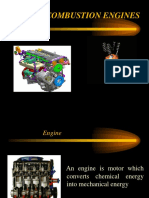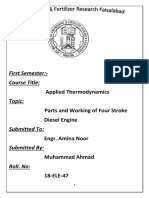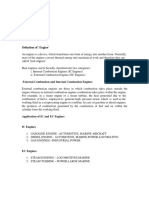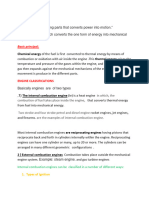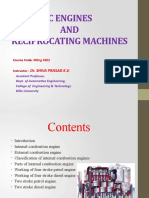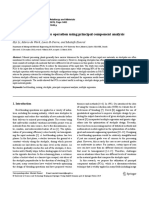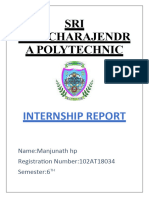0% found this document useful (0 votes)
4 views24 pagesThermal Engg 4 Sem
The document provides a comprehensive overview of Internal Combustion (IC) Engines, detailing their parts, functions, and materials used in manufacturing. It also includes practical experiments related to valve timing diagrams, carburetors, fuel injection systems, and cooling circuits in multi-cylinder engines. Each section outlines the aim, apparatus, theory, and results of the practical studies conducted on these engine components.
Uploaded by
happysinghsk777Copyright
© © All Rights Reserved
We take content rights seriously. If you suspect this is your content, claim it here.
Available Formats
Download as DOCX, PDF, TXT or read online on Scribd
0% found this document useful (0 votes)
4 views24 pagesThermal Engg 4 Sem
The document provides a comprehensive overview of Internal Combustion (IC) Engines, detailing their parts, functions, and materials used in manufacturing. It also includes practical experiments related to valve timing diagrams, carburetors, fuel injection systems, and cooling circuits in multi-cylinder engines. Each section outlines the aim, apparatus, theory, and results of the practical studies conducted on these engine components.
Uploaded by
happysinghsk777Copyright
© © All Rights Reserved
We take content rights seriously. If you suspect this is your content, claim it here.
Available Formats
Download as DOCX, PDF, TXT or read online on Scribd
/ 24






